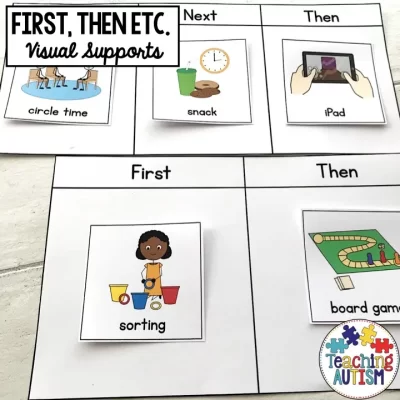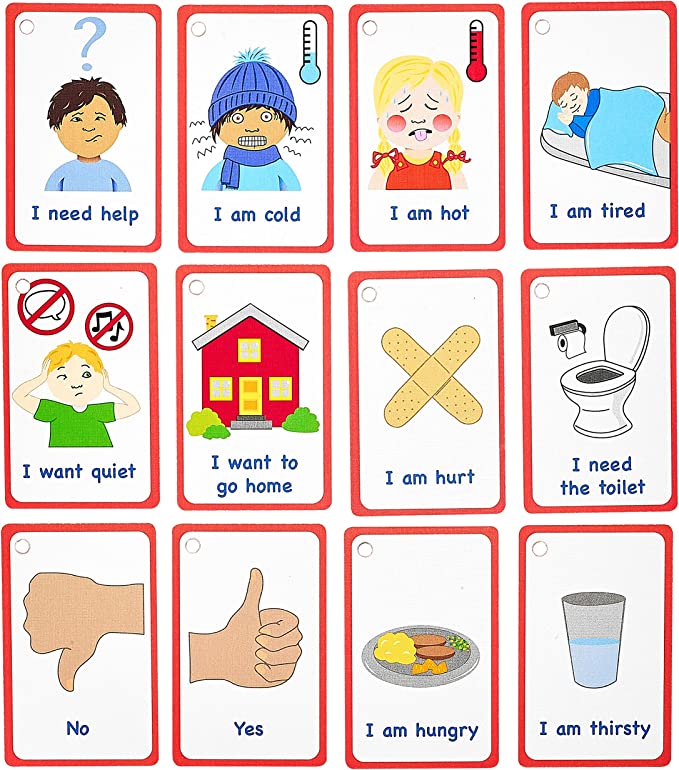How to use a
Visual Aids
What is a Visual Aid?
A visual aid is a tool or resource that is used to help individuals with autism or other developmental disorders to understand and learn new concepts or skills. Visual aids can be used to teach a wide range of skills, including communication, social interaction, academic skills, and daily living skills.

Some examples of visual aids that can be used in therapy include picture cards, flashcards, visual schedules, social stories, and visual prompts. They can be used to teach language, reinforce social interactions, help with transitions and routines, teach basic academic skills, and help with self-care tasks. These visual aids help individuals with autism to understand and process information in a way that is concrete and meaningful to them, and can be especially useful for individuals who struggle with verbal communication.
Visual aids can help to make instructions and information more concrete and tangible for clients who may have difficulty understanding verbal language. This can include things like visual schedules, which can help the client understand what they will be doing and in what order, reducing anxiety and increasing their sense of control over their environment.
Visual aids can be used to help with organization, such as with visual timers, first-then boards, or visual schedules can help with organization, attention, to understand the passage of time, and also to focus on specific tasks, breaking them in small chunks to make it more manageable for the client. This is particularly useful for clients with autism, which often have difficulty with these skills.
The following are example skills that can be taught using visual aids:
- Picture cards can be used to teach a variety of skills, such as vocabulary, social interactions, and daily living tasks. They can be used to prompt the client to perform an action, make a request or answer a question. For example, picture exchange communication systems (PECS) can be used to help non-verbal clients express their wants and needs.
- Choice boards are visual aids that allows the client to make a choice by pointing or touching the option they want. This can help with communication and also give the client more control and autonomy by providing a way for them to self-cue and self-monitor their behavior.
- Social stories are short narratives that describe a social situation in a simple and concrete way. They can also be used to teach social skills such as facial expressions, emotions and behavior expected in different situations.

Overall, using visual aids with clients on the spectrum can be an effective way to support communication, increase understanding of information, teach new skills, and make it easier for them to understand and participate in the therapy. However, it’s important to keep in mind that every child is different, and what works for one child may not work for another. Therefore, the therapist should always test and evaluate the use of visual aids before starting a therapeutic plan.